Configure Now
Items in Your Cart0
0Items in Your Cart
Start building your packageShop Now
Remote Arctic waters hold some of the planet’s most fragile and little-understood ecosystems. The 2025 Blue Green Expedition focused on Arctic marine and Greenland shark research, to better understand life beneath the ice. Using Deep Trekker ROVs and other underwater technology, the team accessed areas difficult for humans to reach, capturing rare footage of plankton blooms, comb jellies, and other deep-water species, contributing to marine habitat monitoring and habitat mapping efforts.
The expedition also emphasized community outreach and student engagement in marine science, demonstrating how ROV technology and submersible drones can connect northern communities to marine science and inspire the next generation of researchers.
This case study explores the team’s mission, methods, and discoveries — from monitoring aquatic ecosystems, conducting environmental assessments, to performing ROV inspections, exploring the mysterious and intriguing world beneath the frigid Arctic waters and documenting the marine biodiversity.

The Blue Green Expedition to the Arctic set out with one central goal - to support the Greenland Shark Research Team led by Dr. Greg Skomal and National Geographic Explorer Nick Caloyianis. With permission from the Government of Greenland under the Biological Diversity Convention and the Nagoya Protocol (Non-Exclusive License No. G25-057), the team aimed to locate and study the elusive Greenland shark using a Deep Trekker PIVOT ROV.
The underwater ROV was tasked with documenting the habitat profile, potential feeding or capture sites, and bottom substrate types associated with Greenland sharks in areas where longline fishing gear was deployed.
Erica Moulton, Director at the Center for Open Exploration and Assistant Dean of Natural Science at St. Petersburg College, explained that the team hoped to expand the sparse visual record of Greenland shark habitats:
“Having the PIVOT ROV onboard this Expedition meant we had the tools on hand, ready to go and immediately accessible to document the areas where we had hoped to find and catch a Greenland shark. We were well prepared!”
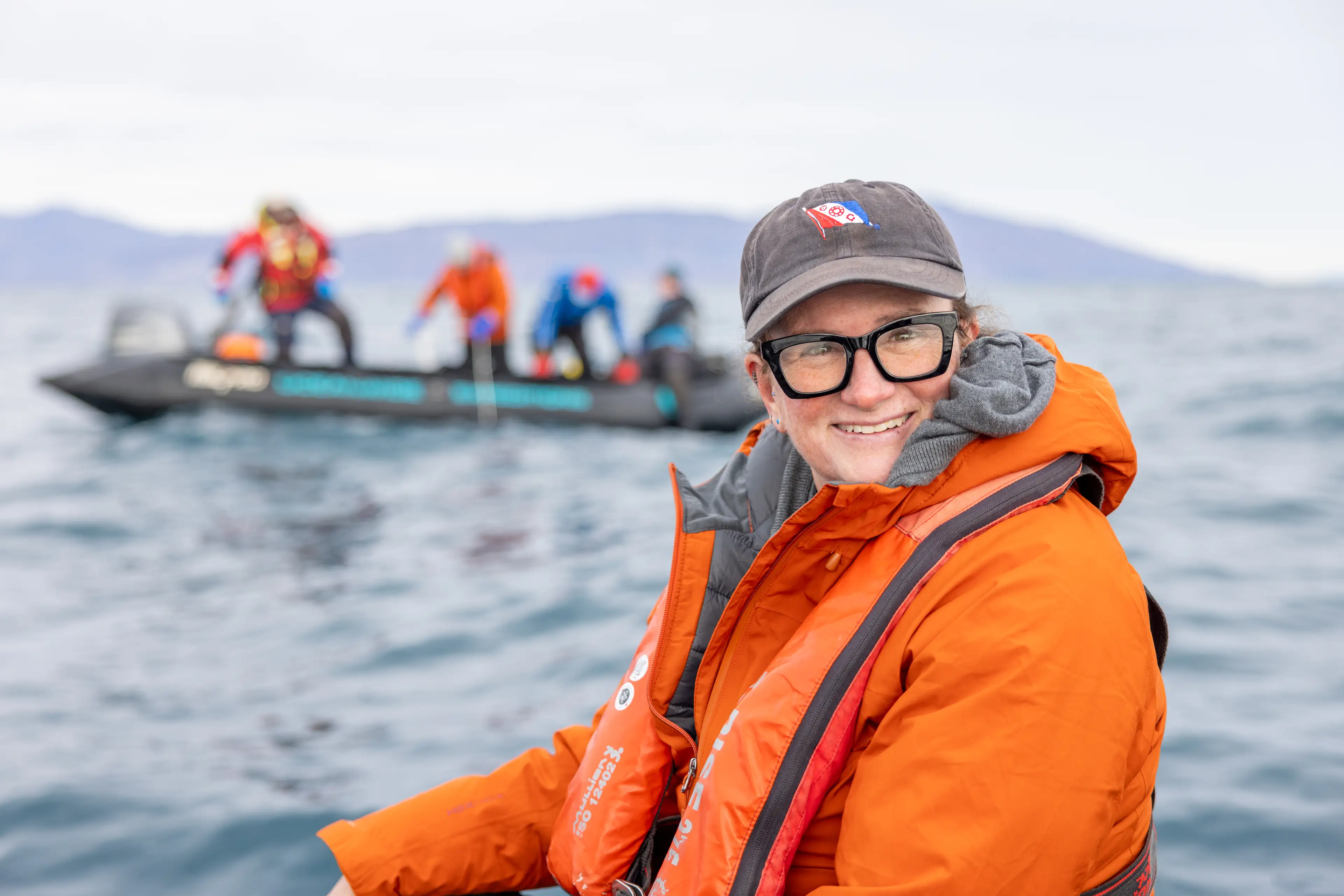
While no sharks were captured during this leg of the study, the expedition produced valuable imagery of Arctic benthic ecosystems and confirmed the feasibility of deploying compact, battery-powered submersible robots for science in cold-water ecosystem documentation and environmental assessments.
The Arctic’s dynamic conditions posed unique difficulties. Glacial melt introduced layers of freshwater carrying sediment and silt, reducing visibility to less than one meter in several sampling zones.
As Mouton confirmed, “We encountered many areas where glacial melt water was not only bringing in fresh water, but also carrying large amounts of rocks and soil making visibility a challenge, more like a glass of milk than the vibrant glacial water one might think of in the Arctic. Haloclines of varying intensity were noted by other members of the scientific team, but didn’t affect the performance of the PIVOT or camera visibility.”
Haloclines were common but did not interfere with the PIVOT’s maneuverability or camera performance. Despite occasional low-battery warnings below 100 m - likely due to temperature-related voltage fluctuations - the ROV performed consistently.
As Erica explained, “Bottom depths during the gear deployments varied between 100 and 150 meters and the PIVOT was able to descend to these depths if needed. The logistics worked great. The PIVOT is heavy enough to not bounce around or jostle in rough seas and easily deployed by a single user over the side of a RIB boat or Zodiac."
Discover the vital role of underwater positioning in marine science, and how remotely operated vehicles (ROVs) are leading the way in location tracking.
Although the expedition did not locate Greenland sharks, the underwater drone captured rare footage of late-season Arctic plankton blooms. Even at 100 m depth, high plankton biomass was visible in the submersible ROV’s UHD camera feed.
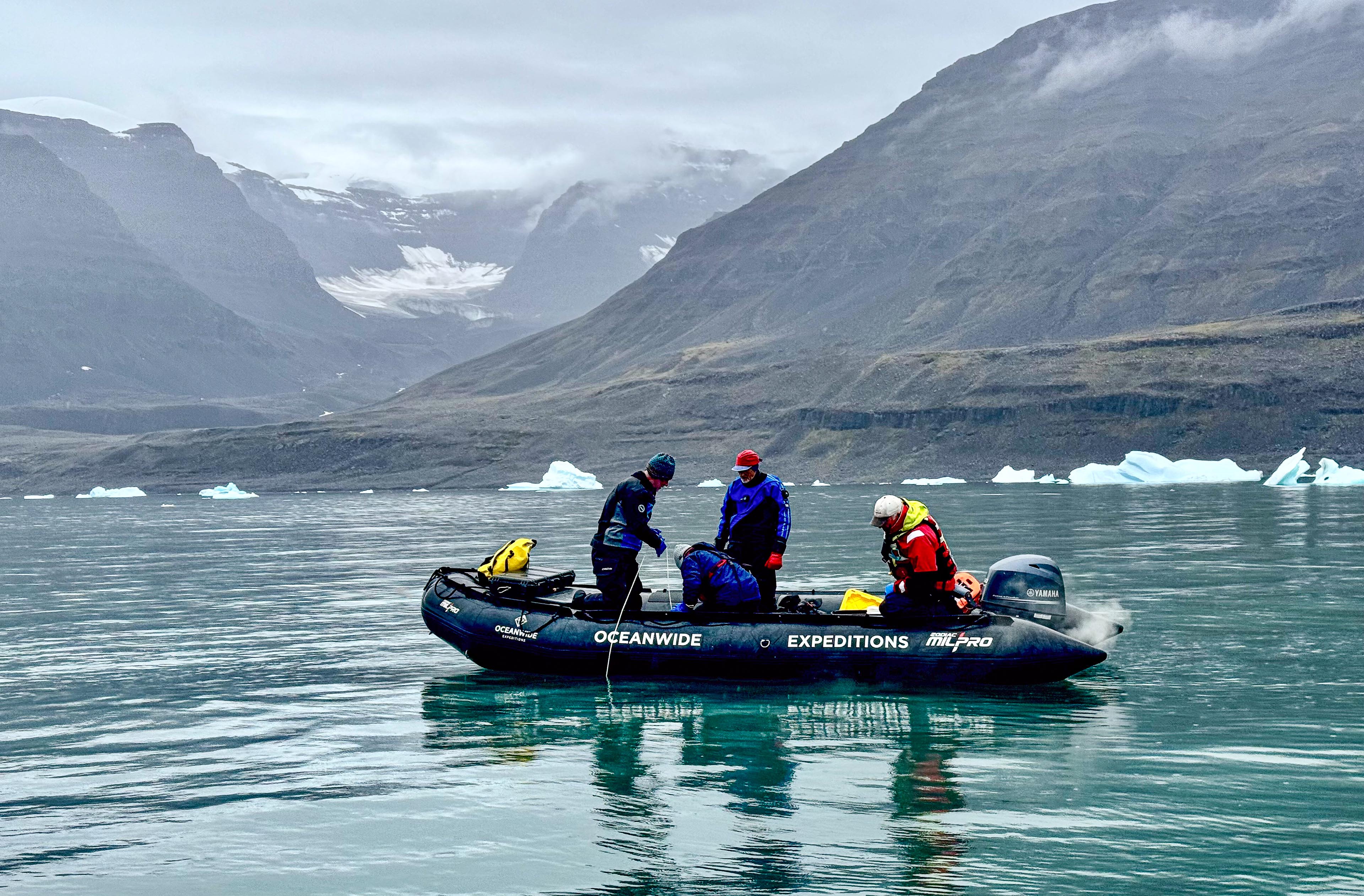
Among the organisms observed was a Mertensia cydippid ctenophore - a comb jelly identified later by Dr. George Matsumoto of MBARI. The observation provided insight into the persistence of planktonic life during the transition from 24-hour daylight to the onset of polar night, when most zooplankton typically descend to overwintering depths.
Learn how Parks Canada Uses ROVs to investigate historical wrecks and underwater sites while reducing diver risk and improving survey efficiency and accuracy.
A highlight of the expedition occurred unexpectedly when weather and routing changes brought the team to the Greenlandic community of Ittoqqortoormiit . With permission from community leader Mette Pike Barselajsen, expedition host Faith Ortins arranged a dockside outreach session using an older model Deep Trekker DTG2 underwater ROV.

Local students quickly mastered the controls, and by piloting the submersible drone beneath the dock to search for lost treasures and observe the kelp community, they gained hands-on experience that strengthened student engagement in marine science and promoted community science outreach.
Moulton recalled. “We had the fantastic opportunity to stop by the Greenland community of Ittoqqortoormiit, located on the East side of Greenland. Expedition Host Faith Ortins obtained permission from the Community Leader Mette Pike Barselajsen and we were able to bring the DTG2 ROV ashore. It quickly became an intriguing lesson in piloting and in no time young students in the community were flying the ROV off the dock, looking for lost cell phones, admiring the kelp community and determining who was the best pilot!”

“I have taught ROV camps and outreach for almost 20 years now. Handing over the Deep Trekker ROV controls to the young student in the pictures will forever be a highlight. If given the opportunity she’d be a fantastic ROV pilot!”
This outreach demonstrated how ROV technology and underwater inspection technology can inspire the next generation of marine science students while fostering stewardship of aquatic ecosystems and marine conservation.
Discover how Biigtigong Nishnaabeg of Pic River utilizes ROV technology to improve environmental monitoring and enhance community engagement and research efforts.
In Arctic conditions where field logistics can make or break a research window, reliability was essential for ROV inspections and underwater surveys. The underwater drone’s compact design allowed it to remain pre-loaded and secured on a Zodiac, ready for immediate deployment whenever a capture event occurred. Its durability and low operating footprint made it a dependable “team member” supporting marine habitat monitoring, environmental assessment, and coastal monitoring efforts on a vessel packed with scientific instruments.

“Not worrying about science gear and performance and ability to handle tough conditions is a good thing,” Moulton summarized. “The PIVOT is safe, really easy to maneuver, and we felt like all of the parts - from screen shield to batteries - were easy to use, change out and even add on in the field or on the deck. The PIVOT is a great team member, which is really efficient when one is using so much gear to catch sharks and deploy gear. It’s tough, doesn’t take up too much space, and can easily be handled by one person.”
Explore how Marine Science benefits from ROV technology to improve environmental monitoring and enhance research efforts for more efficient and precise results.
The Greenland shark (Somniosus microcephalus) is a deep-water species native to Arctic and North Atlantic oceans. Their evasive behavior and habitat in sub-zero waters make traditional observation methods difficult, creating significant gaps in knowledge about their life history and ecological role. What we do know is that these sharks grow very slowly, can live incredibly long lives, and reach sexual maturity only after a century. Radiocarbon dating of eye lens proteins from one mature female examined suggested she was anywhere from 272 to 512 years of age.
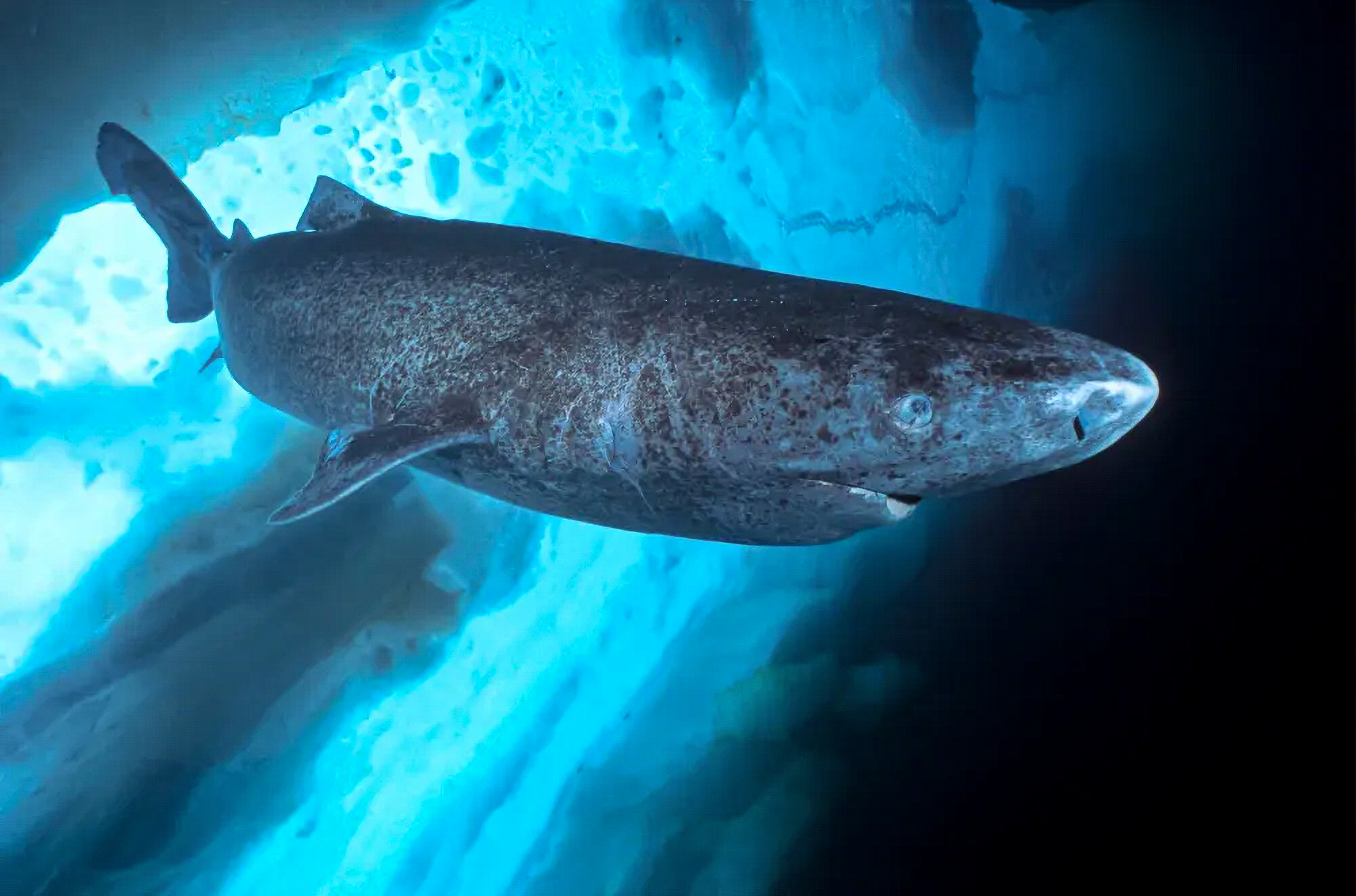
Studying Greenland sharks provides critical insight into Arctic marine ecosystems, and the structure, health, and stability of deep-water food webs. Modern tools such as Deep Trekker ROVs and other underwater ROV technology allow researchers to explore Greenland shark habitats and Arctic benthic ecosystems with minimal disturbance, revealing unique ecological interactions that would otherwise remain hidden.
The Greenland shark is one of the ocean’s least observed apex predators - and one of the longest-lived vertebrates on earth. Rarely encountered due to its slow movement, low population density, and preference for cold, dark waters; this slow growth rate, combined with the shark’s deep-water Arctic distribution (typically 200–600 m), makes direct observation extremely difficult.
Encounters are further limited by environmental conditions. The species prefers sub-zero waters (−1 °C to 4 °C) and often inhabits areas with strong haloclines and glacial runoff - environments that obscure visibility and challenge traditional camera systems. Such conditions highlight the value of ROV inspections and underwater surveys for documenting Greenland shark habitats and Arctic benthic ecosystems.
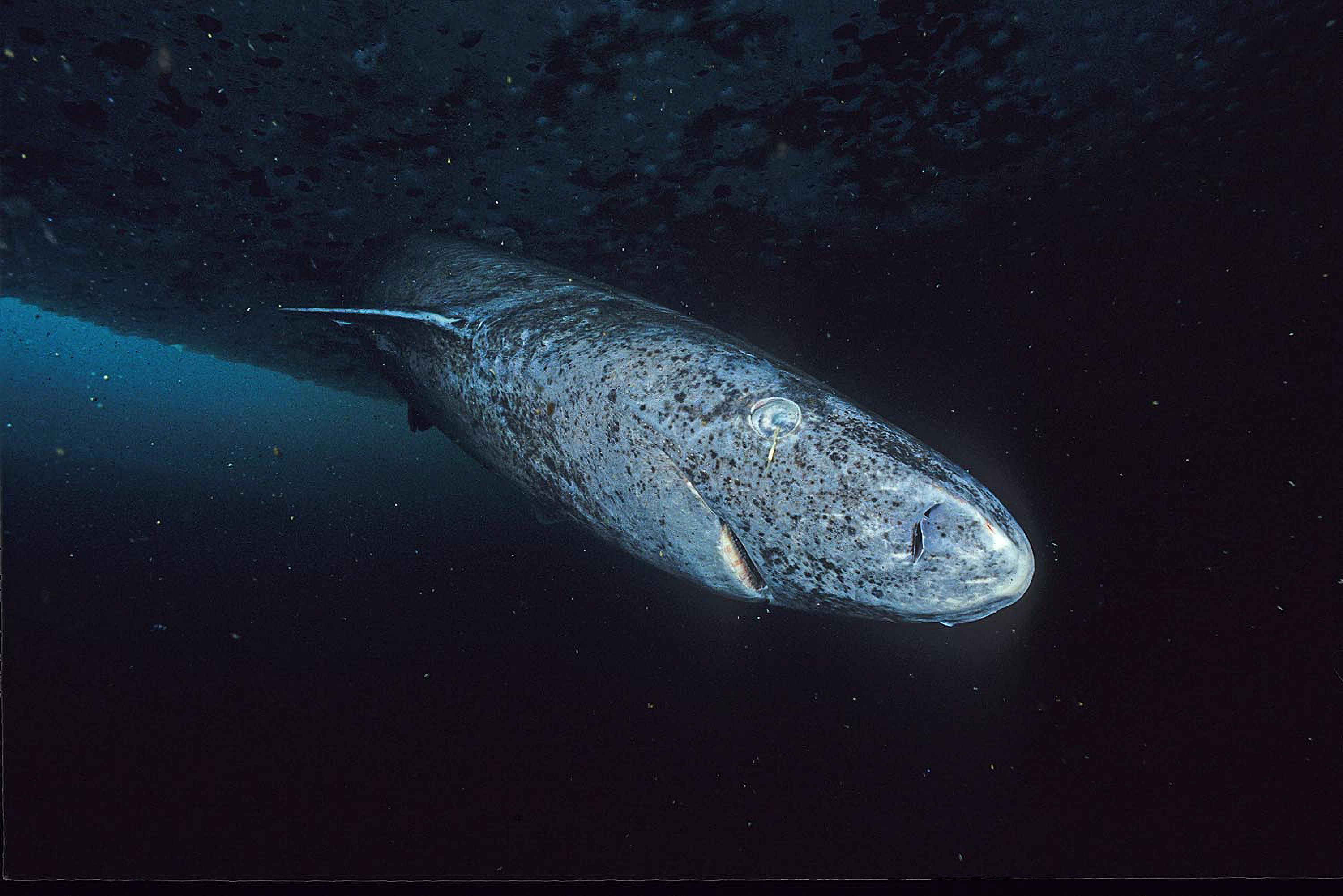
The 2025 expedition aimed to expand the limited visual record of these habitats, contributing to long-term ecological baselines for Greenland shark research, marine habitat monitoring, and habitat protection.
Although no Greenland sharks were observed during the 2025 Blue Green Expedition, the mission confirmed that submersible drones and other underwater ROV technologies - such as integrated sonar, samplers, and manipulators - are effective tools for Arctic marine research, marine habitat monitoring, and environmental monitoring in remote, challenging conditions. The success of compact, battery-powered ROVs demonstrates their suitability for underwater surveys, environment sampling, and habitat mapping in areas where traditional observation is difficult.
The team plans to continue searching for Greenland sharks in future expeditions, including potential work in Antarctic waters in 2026, contributing to long-term marine biodiversity studies, environmental impact assessments, and marine conservation initiatives. These missions also provide opportunities for community science outreach and student engagement in marine science, helping to cultivate the next generation of researchers in aquatic ecosystem studies.
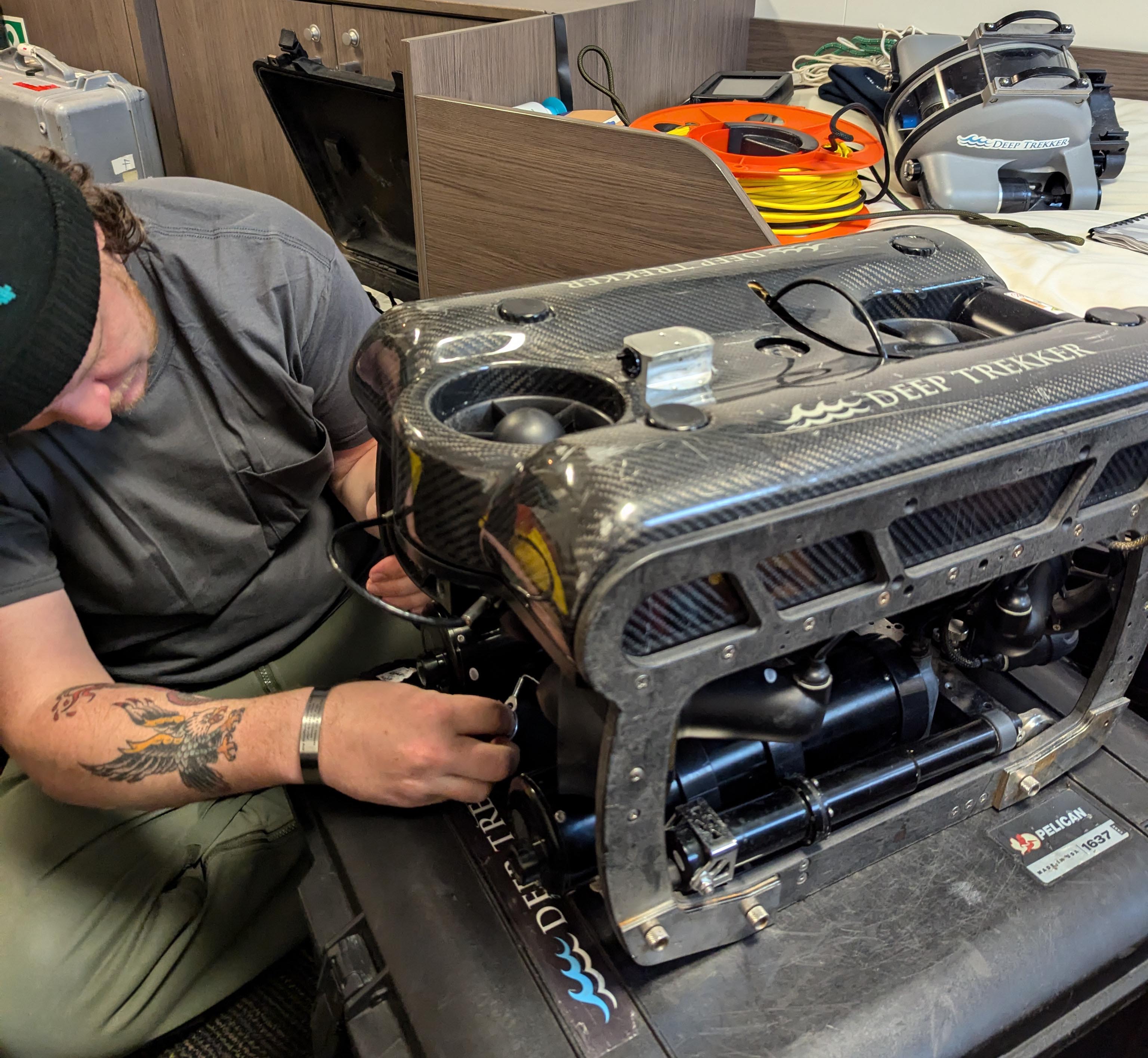
“Greenland sharks are extraordinarily rare,” Mouton noted. “To catch one and witness the natural habitat would be amazing.”
Organizations working in challenging aquatic conditions can greatly benefit from integrating Deep Trekker ROVs and submersible robots for science into their operations. These systems enhance safety, operational efficiency, and data collection capabilities, whether for marine habitat monitoring, environmental assessment, coastal monitoring, or underwater surveys.
Our team works closely with clients to design custom ROV solutions suited to unique applications, including marine science research, infrastructure inspections, waterway maintenance, salvage operations, aquaculture monitoring, specialized environmental monitoring projects, and more. With flexible deployment options and advanced ROV technology, projects of any scale can be executed reliably in both ocean and freshwater ecosystems.
Connect With Us to Support Your Next Field Mission
When you’re ready to integrate a Deep Trekker ROV into your operations, contact us for a personalized consultation and a customized quote tailored precisely to your requirements. Incorporating these versatile underwater drones into your workflow supports habitat mapping, marine biodiversity studies, and environmental monitoring, ensuring safer, more efficient, and more effective results.

July 30th, 2021
Learn all about remotely operated vehicle pilots: how to become one,...
November 5th, 2024
Learn more about what sonar is and its many uses. Read...
December 23rd, 2021
ROVs and sonar can be used to inspect underwater structures such...